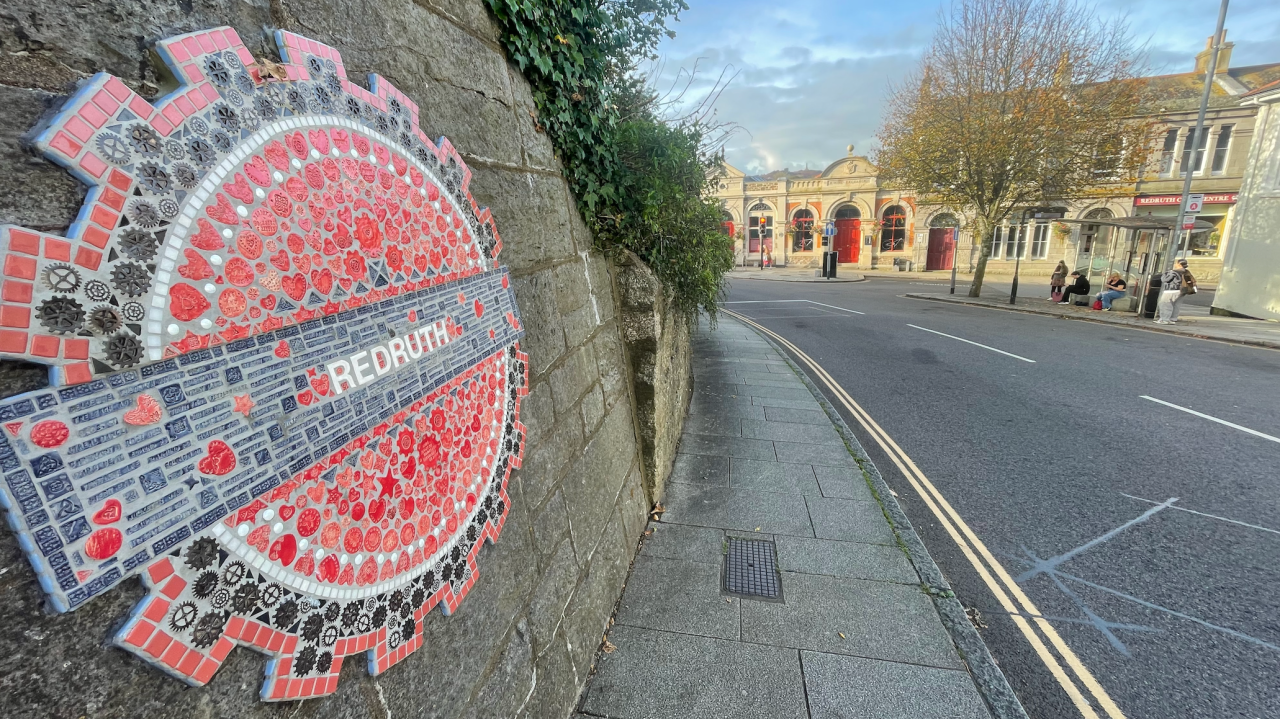

Guest Blog
Written by Joshua Nawras, Director of The Ladder
Redruth is not a seaside resort, nor a tourist honeypot. It sits inland, a former mining town that has carried the scars of industrial decline more than most. For years it was among the most deprived places in the country, with whole neighbourhoods ranked in the bottom ten percent nationally. The high street shuttered, evening economy non-existent, jobs scarce, and for many outsiders Redruth had become shorthand for a Cornwall left behind. Yet in the same period a different story has been written, one of patient, long-term investment in creativity and heritage that is gradually shifting both the fortunes of the town and the way it is perceived.
“A lot of the things people told us they were proud of about Redruth was 100 years or more gone and we want to think about how we as artists can work together to look to the future.” Cat, Field Notes, Destination Redruth 2022
Redruth sits at the heart of the Cornwall and West Devon Mining Landscape, a UNESCO World Heritage Site since 2006. It was once described as the “historic heart of mining”, the place where deep lodes of copper and tin fuelled the construction of engine houses all along the Great Flat Load and that became symbols of Cornish identity. But what does this really mean to someone growing up in Redruth today? For many, the industrial landscape has felt like a monument to what has been lost rather than a foundation for what might come next. Heritage has to be alive, it has to be useful. The lesson from Redruth is that these sites and stories can be tools to unlock funding, create jobs, and build civic confidence, if they are placed in the hands of communities and used to address present-day needs.
This story begins over twenty years ago with Krowji, one of Cornwall’s creative clusters of artists studios, established in the shell of the former grammar school in 2005. Backed by more than £6m across two phases, it has grown steadily into the largest hub for artists and makers in Cornwall. The effect was not just the reimagination of the old school and the provision provided by the studios themselves to hundreds of artists and small businesses, but also the confidence it gave to other funders and potential developments. This was proof that Redruth could be a viable base for the creative industries and looking around there were other once proud sites that presented similar opportunities for heritage led investment.
This was followed by another key development - Kresen Kernow, Cornwall’s archive centre, which opened in 2019 following more than £20 million of investment from the National Lottery Heritage Fund and Cornwall Council. The project transformed the derelict Redruth Brewery into a contemporary public building designed by Purcell Architects, retaining elements of the original brewhouse within a new structure of brick and glass. It houses over 1.5 million historic documents, maps and photographs in climate-controlled strongrooms, making it the largest archive in the South West. Alongside its conservation role, Kresen Kernow has become an active cultural venue, hosting exhibitions, workshops and community events that attract visitors throughout the year. The ambition of the project marked a turning point, demonstrating that Redruth could host facilities of national importance and setting a benchmark for the regeneration that followed.
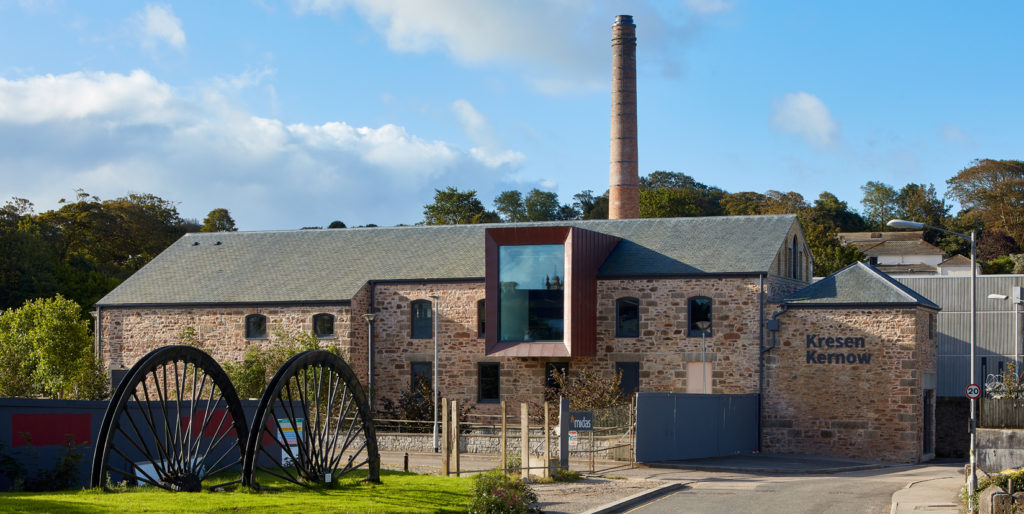
Kresen Kernow, embodying the celebration of Cornwall's heritage in their repurposed home. © Phil Boorman.
“Kresen Kernow is a fantastic building, and a fitting home for Cornwall’s history, which our residents and visitors can enjoy and be proud of. It represents a local sense of belonging, distinctiveness and identity.” Former Cornwall Council leader Julian German, at the opening: Cornwall Historical Archive article
The Buttermarket is smaller in scale but equally significant as a transformational project. Once a decaying covered market, its £3.4 million restoration is designed to give the town a new civic heart, a place to meet, shop and gather, making the case that even in towns where the highstreet is suffering, and commerce is seen as on the decline, if you pitch something well enough there are new markets to be unlocked. The space that Thread and Redruth Revival CIC have created is both rooted and forward-looking, celebrating the heritage of the site while offering a model of how traditional markets can be reimagined as inclusive, modern social spaces. More than that, it is a destination space that is drawing residents from across West Cornwall and leaving them wishing they had something similar in their hometown. The buzz it is generating will eventually ripple through the town. It proves that decisive, ambitious change can succeed when the vision is right and the groundwork of trust and investment has already been laid. In many ways, its success also shows why organisations like Redruth Revival are essential: independent enough to think beyond electoral cycles, yet embedded enough to activate communities and turn civic ambition into shared ownership and participation.
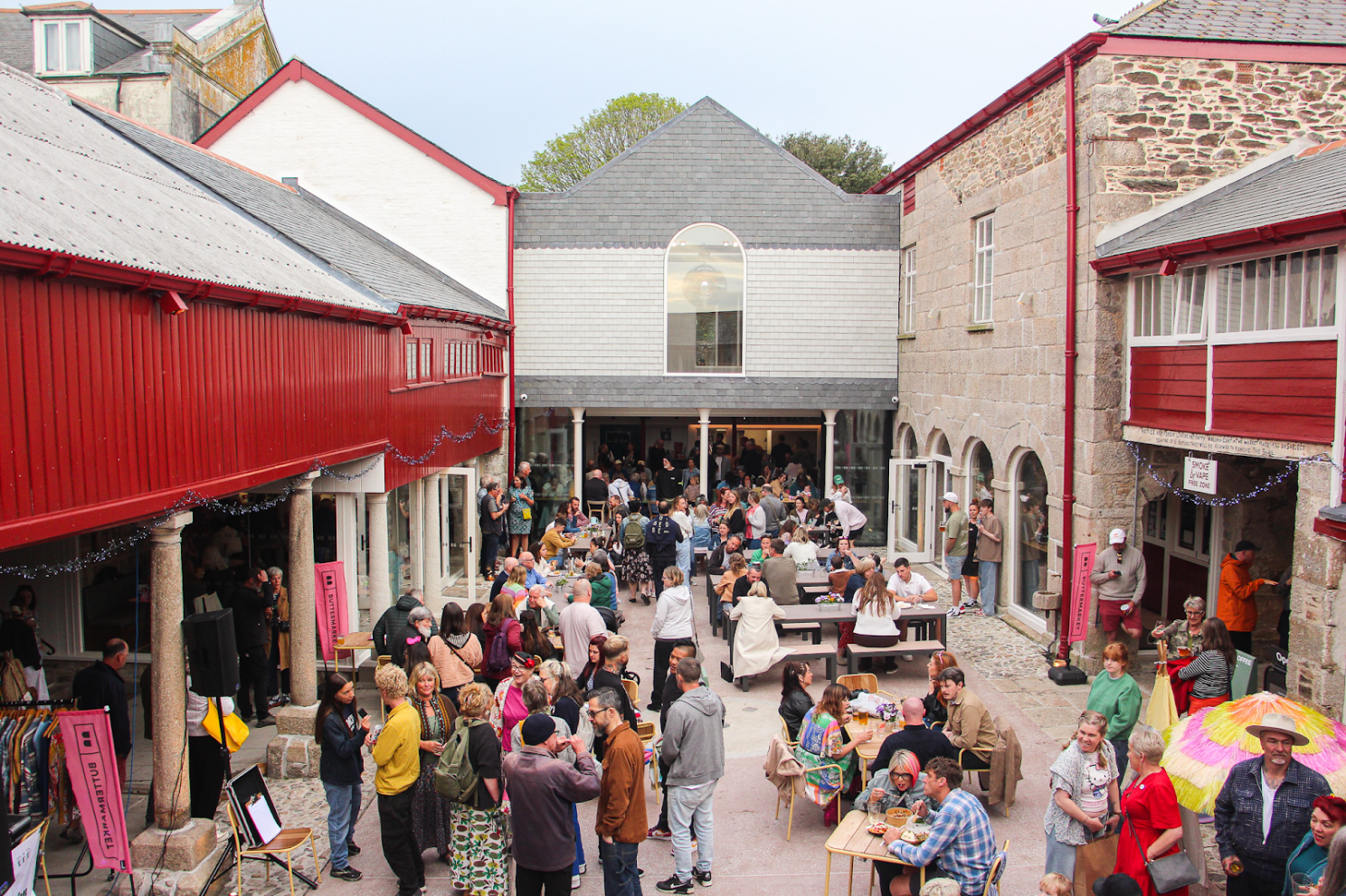
The Buttermarket, Redruth's buzzing food market and social hub. Credit - Lottie Matthews.
Finally, The Ladder, my own personal passion project. The transformation of the former Passmore Edwards Library would not have been possible without the momentum created by those earlier developments that showed a community ready to reclaim its heritage and embrace the possibilities of new creative infrastructure. The Ladder has now been brought fully back into use through more than £1.8 million of combined investment from heritage funders, government programmes and community support.
What was once a leaking, derelict building now houses studios, workspaces and rehearsal rooms alongside community and cultural facilities. Writers’ Block has found a permanent home here, Beats and Roots café has become a daily meeting place, and the nursery in the adjoining college building brings more than eighty families through the doors each week. Together these spaces form a creative cluster, a hub at the heart of Redruth, open to residents, artists and visitors alike.
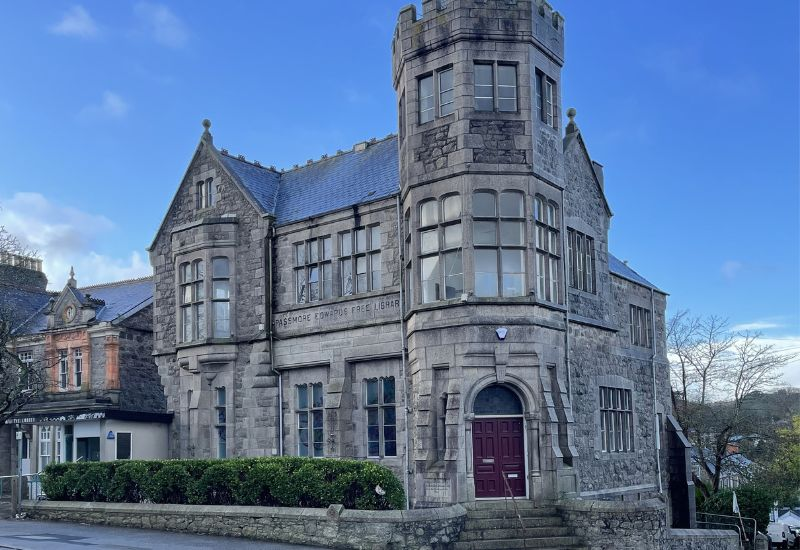
The Ladder, space for a new creative community in the heart of Redruth.
The project sits alongside Krowji, Kresen Kernow, the Buttermarket and other restored landmarks across the town, each distinct but connected. The Ladder’s focus on performance, collaboration and cultural production adds a new dimension to Redruth’s regeneration, turning restored heritage into a working engine for creativity and community life.
None of these projects turned the tide overnight. Their delivery has been spread across two decades, with many more years of planning and fundraising before work could even begin. That slow rhythm matters. Each project built on the momentum of the last, layering confidence and investment in a town that had long been written off. Levels of deprivation remain high and the high street still suffers from empty units, but the cumulative effect of this long investment is visible. Change takes time, and it can be hard to make the case for cultural investment in a period of strained public finances, but the evidence is clear that heritage-led regeneration delivers lasting economic and social benefit.
“In England, one study found that for every £1 of public sector investment in heritage-led regeneration, £1.60 of additional economic activity is generated.”
We have to continue to remind those that say “nothing is changing” of this - these things take time, they cost money, progress is slow but eventually they will pay dividends to all.
It is also important to understand that what has made this possible is not just funding but the fabric of the town itself. Redruth’s sleeping heritage, its grammar school, brewery, Buttermarket and library, provided buildings of quality and scale that were underused or derelict. Their neglect created opportunity: eligibility for heritage funding, the chance for grassroots groups to step in where the market had failed, and the potential to reinvent them for new use. Behind each project lies a determined community. Local organisations, volunteers and campaigners stepped into the gap left by historic underinvestment, often taking on complex ownership and governance challenges to save buildings from decline. This passion, matched with the availability of heritage funding, has proved a powerful combination.
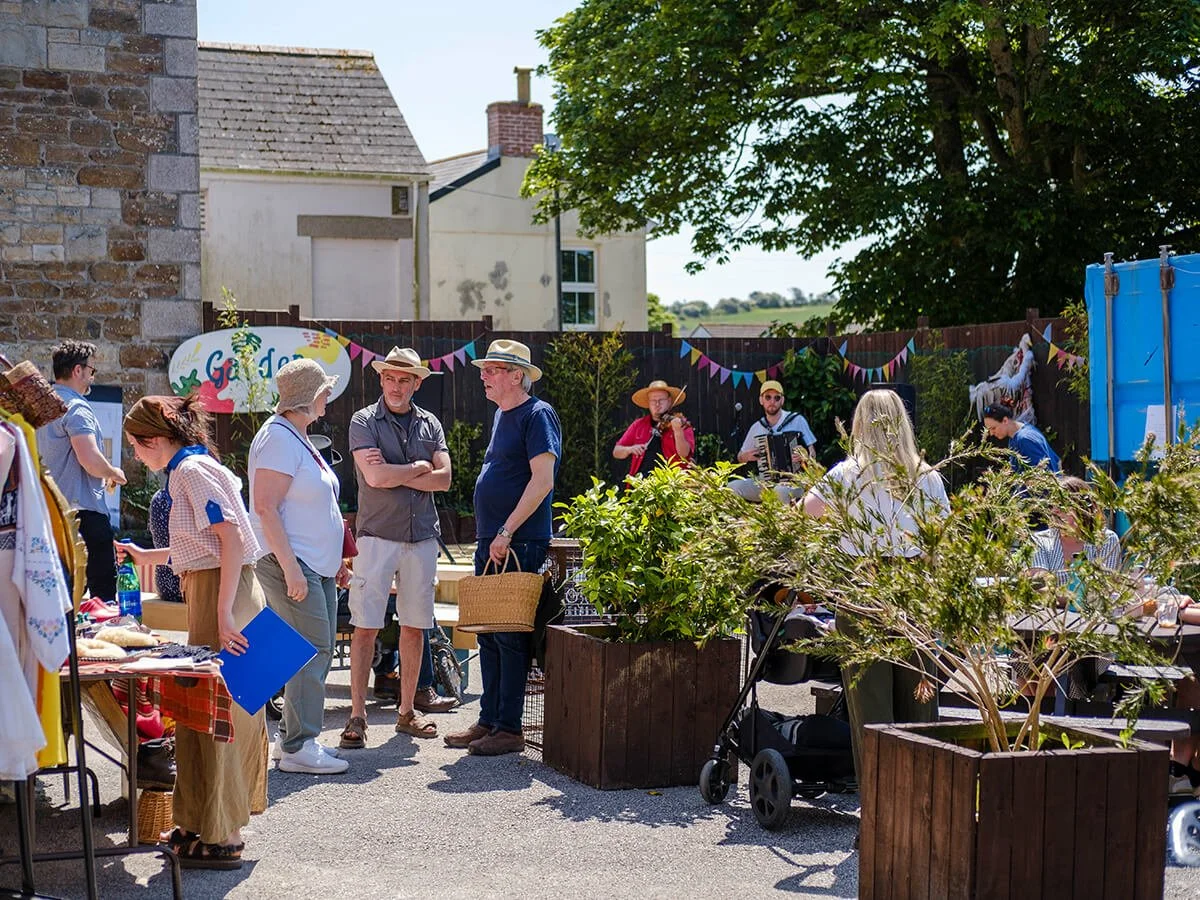
The community comes together to celebrate the old library's new future as The Ladder. Credit - Jenna Hinton.
Redruth’s trajectory reflects a wider pattern seen in towns that have turned to culture as a catalyst for regeneration. Margate, Folkestone and Paisley all show that change is cumulative and depends on sustained investment and trust in local capacity. What were once Redruth’s disadvantages now define its character. Inland, post-industrial and off the tourist map, the town has had to build a new identity from within. That necessity has created a model of regeneration rooted in participation rather than consumption. Its progress has come not through a single flagship project but through a constellation of interlinked initiatives, each reinforcing the next.
The lesson is straightforward. Community, culture, heritage and creativity can reshape a place even in conditions of structural disadvantage, but only when funders, civic bodies and grassroots organisations commit to the long term vision and work in partnership. This is heritage-led regeneration driven by community ownership. It refuses to treat heritage as fixed or decorative, seeing it instead as a working asset: a means of rebuilding civic life, generating skills and testing new responses to persistent social and economic challenges. Redruth’s achievement lies not in preservation but in reactivation, showing how small towns can use their past as a tool to forge their future.
Find out more about The Ladder: The Ladder – A space for stories.
